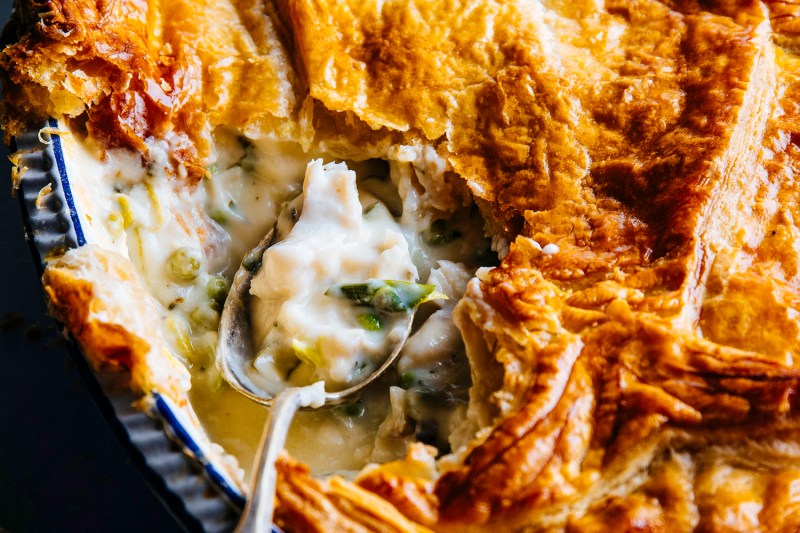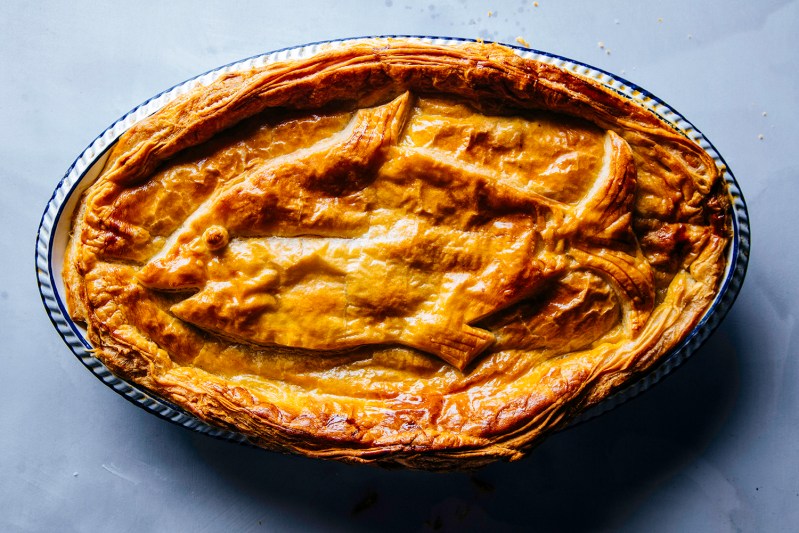As the weather turns from mild chill to polar vortex, you’re inevitably going to start spending more time inside and what better way to stay warm than by cooking (and standing in front of the oven)? Okay, bingeing food shows on Netflix under a blanket is a good idea, too, but it won’t fill you up.
When cooking during the colder months, we’re always on the lookout for hearty meals that stick to your bones and fill you up. One of those that does it for us every time is a nice meat pie. Whether chicken pot pie or shepherd’s pie, we’re big fans of pulling it out of the oven and digging in. One type of meat pie that’s often overlooked (at least here in the U.S.) that we think should be getting more credit, though, is a good, classic fish pie.

It might not be the first type to come to mind, but after checking out this recipe, we’re going to be putting it in top consideration for favorite meat pies from now on.
This recipe comes to us from New York City-based food stylist Alison Attenborough, who uses pollock as her fish of choice.
Wild Alaska Pollack Fish Pie Recipe

Ingredients:
- 4 (three-ounce) fillets Wild Alaska Pollock, cut into one-inch chunks
- 3 leeks
- 1 sheet frozen puff pastry, thawed
- 2 c chicken stock
- 1 c frozen peas
- .5 c dry white wine or dry vermouth
- .25 c butter
- 2 tbsp flour
Method:
- Preheat oven to 425 degrees Fahrenheit. Slice the leeks in half lengthwise, and then slice into quarter-inch half-moons. Rinse the sliced leeks in cold water and drain to remove any silt. Melt two tablespoons of butter in a sauté pan, and cook the leeks over medium heat until they become soft and fragrant, about seven minutes. Add white wine and bring to boil to burn off the alcohol. Remove from heat, add the peas, and set aside.
- Melt the remaining two tablespoons of butter in a saucepan or skillet. Stir in the flour and cook for two to three minutes. Slowly whisk in the chicken stock, stirring constantly, until sauce thickens, about three minutes. Add the pea and leek mixture and Wild Alaska Pollock, and simmer for one minute.
- Spoon the mixture into a greased eight-inch casserole dish. Remove the pastry from freezer and gently unfold onto a floured work surface just enough to smooth out creases. The pastry may take a minute or two to soften. Roll the pastry gently so that it is large enough to fit over dish with some overhang. Drape the puff pastry sheet over the filling and crimp the edges under the side of the dish to create a seal. Cut two or more vents in the center of the crust.
- Set the casserole dish on a baking sheet and cook on center rack for 25 minutes, or until the pastry is golden brown. Enjoy!



